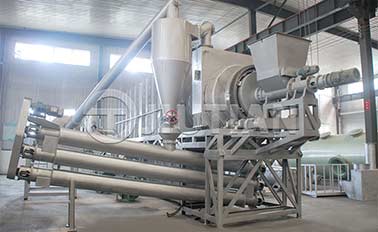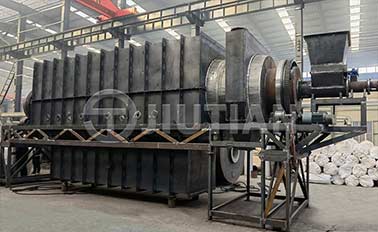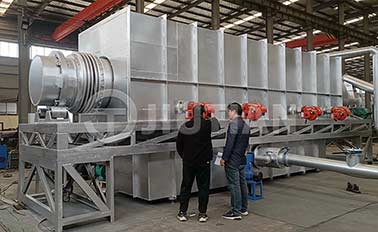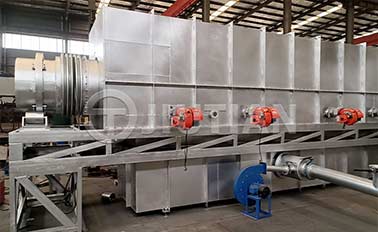A horizontal carbonization furnace (also known as a horizontal carbonization furnace) is a type of equipment used to prepare charcoal. Its carbonization principle is based on heating organic raw materials (such as wood, coconut shells, straw, etc.) and carbonizing them in a low oxygen environment. The following is a detailed explanation of the carbonization principle of a horizontal carbonization furnace:
1. Loading raw materials: The raw materials are usually loaded into the feed end of the horizontal carbonization furnace in the form of blocks or granules. These raw materials can be carbonized materials such as wood, coconut shells, and straw.

2. Sealed furnace chamber: Once the raw materials are filled, the furnace chamber will be sealed to limit the entry of oxygen. This is to ensure the formation of a low oxygen environment during the carbonization process, thereby preventing the complete combustion of raw materials, but rather the occurrence of carbonization reactions.
3. Heating and carbonization: The raw materials in the horizontal carbonization furnace begin to heat up. Usually, the heating source is located at one end of the furnace chamber. When the raw material is heated, the volatile substances in it begin to release and undergo carbonization reaction in a low oxygen atmosphere. Carbonization is a high-temperature decomposition process in which the carbon in wooden raw materials gradually turns into charcoal, while releasing gas and water vapor.
4. Gas emission: Due to the lack of oxygen in the furnace chamber, the released gas and water vapor cannot be burned, but are discharged through pipelines or ventilation systems. These gases contain organic volatiles and some heat.
5. Cooling and collection: The carbonization process usually continues in a horizontal carbonization furnace until the volatiles in the wood are basically released. Then, the charcoal begins to cool and gradually moves towards the discharge end of the horizontal carbonization furnace. During this process, charcoal is cooled and collected through specific devices.
Overall, the carbonization principle of a horizontal carbonization furnace involves heating organic raw materials to high temperatures, causing them to decompose in a low oxygen environment, form charcoal, and emit volatile substances. This carbonization method is usually more effective than open carbonization because it is easier to control temperature and oxygen supply, resulting in higher quality charcoal. Horizontal carbonization furnaces are widely used in the production of charcoal in industrial and rural areas.

Location:Indonesia
Project Progress:Put Into Production

Location:Vietnam
Project Progress:Put Into Production

Location:Kenya
Project Progress:Put Into Production

Location:Canada
Project Progress:Put Into Production